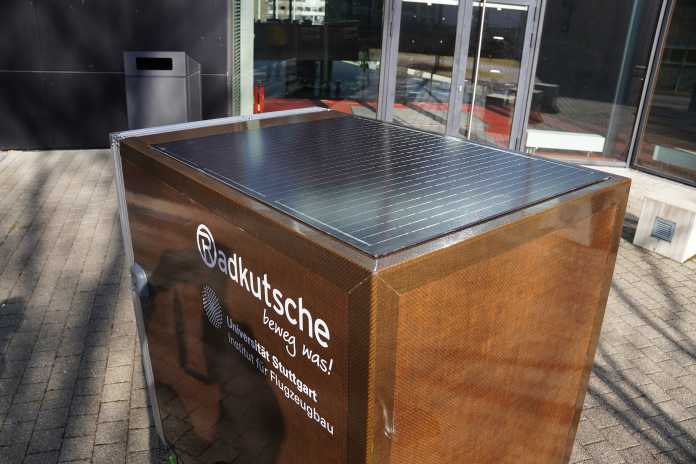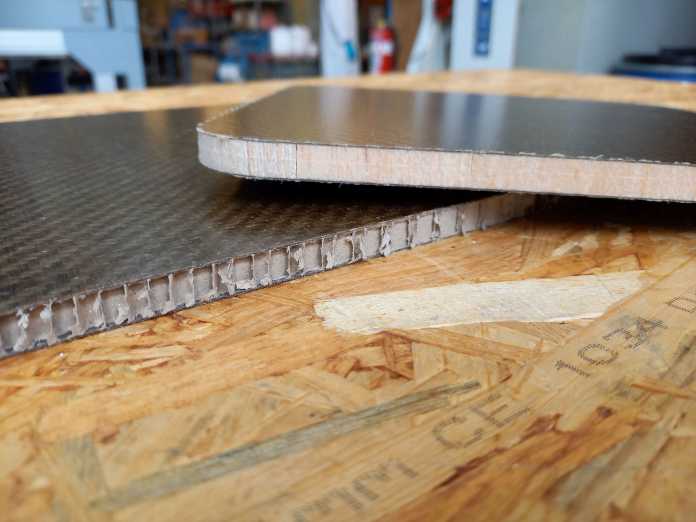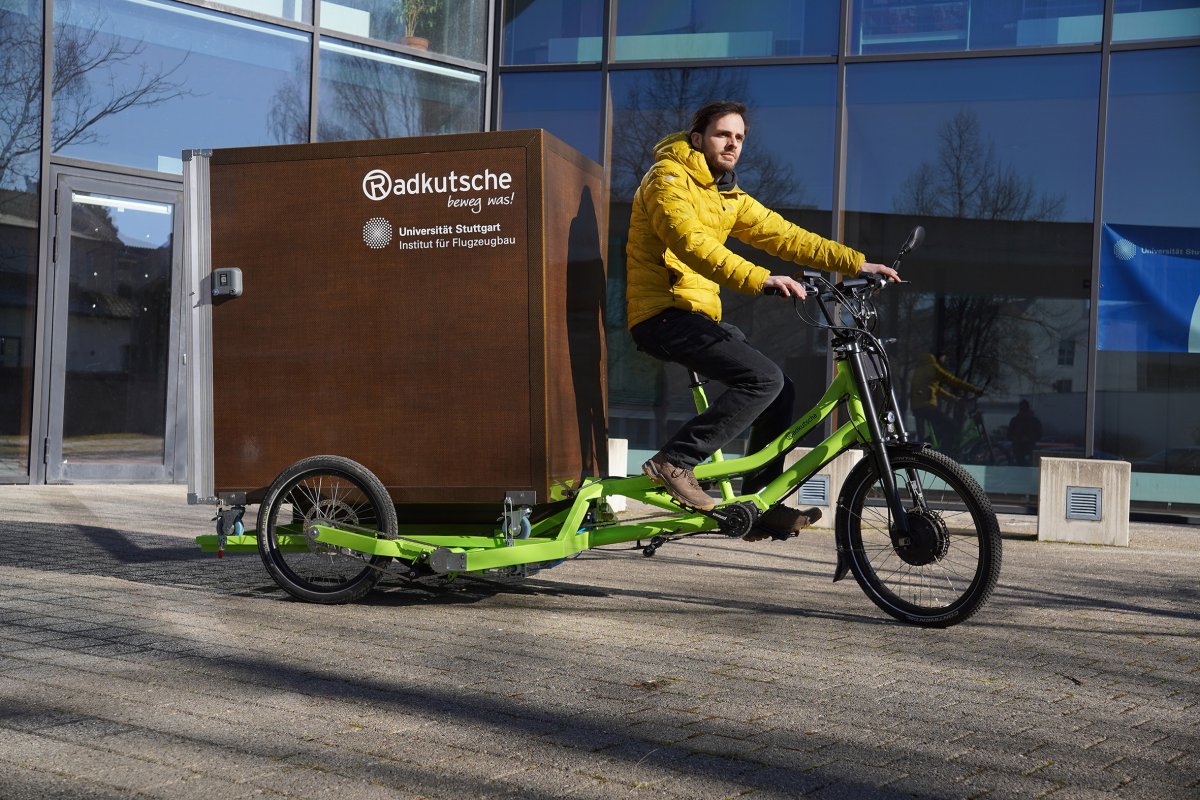A complete Euro pallet fits on the cargo bikes developed by the University of Stuttgart and Radkutsche GmbH. The pallets can be loaded up to a height of 1.36 meters. So that makes a loading volume of around 1.3 cubic meters. That in itself is nothing special – there have been cargo bikes with significantly more for years. The special thing about the bikes is that they should become part of an interlocking logistics system. Its basic building blocks are interchangeable containers made of bio-plastic, which are equipped with batteries and photovoltaic modules.
In a distribution center, these containers can be loaded and unloaded in peace. Drivers then only have to pick up the full containers and get a fresh battery on board at the same time. Thanks to the PV modules, the containers can partially charge themselves and provide a few kilometers of additional range on the way.
New loading for the cargo bike
The containers were created as part of the “CoaLa” project (“Bio-based container system adapted to a new, driver-supporting cargo bike for delivery traffic on the last mile”). They still weigh an impressive 63 kilos when empty. But that is also due to the requirements: they are designed in such a way that up to three containers, each weighing 160 kilograms, can be stacked on top of each other. In addition, there are comparatively heavy monocrystalline PV modules with an output of 180 watts. Project manager Mathias Engelfried from the Institute for Aircraft Design at the University of Stuttgart explains that lighter PV foils would have had a problem with heat dissipation. The pure structural weight of the boxes is 35 kilos.

Container made from flax fibers in combination with a bio-based plastic and with an integrated solar panel.
(Image: University of Stuttgart / IFB)
The cargo bike can be lowered pneumatically at the rear so that the boxes can be changed without outside help. The containers can then be rolled up using built-in heavy-duty rollers. They are then fixed and connected with a magnetic connector. Alternatively, the wheels can also be loaded with a forklift.
Special production for the material of the cargo bike boxes
Another part of the project revolved around the sustainable production of the boxes. They are made of flax fibers and epoxy resin. This is made from 45 percent of an oil that is a waste product from the shells of cashews. Engelfried also hopes to get rid of the petrochemical share of 55 percent. “In the near future, 100 percent bio-based plastics are possible,” he says.
The flax fibers are bought in as finished fabric. Compared to glass or carbon fibers, however, they show a different swelling behavior, which can lead to pore formation, among other things. The researchers have therefore developed a special manufacturing process. Fibers and resin are wrapped in foil, put under vacuum and pressed with two rollers like a mangle. A fiber content of up to 45 percent can be achieved in this way.
The finished fibreboards are then glued to form sandwich panels. As a core for these sandwiches, the Stuttgart-based company experimented with honeycomb cardboard, cork, balsa and paulownia wood, among other things. Balsa wood was then chosen because of its easy availability. Non-structural parts have a cardboard honeycomb core. Overall, according to the researchers, the natural fiber boards have similar mechanical properties to those made of fiberglass.

The sandwich material of the container exploits the potential of lightweight construction.
(Image: University of Stuttgart / IFB)
Cargo bike boxes with a long service life
When the boxes have reached the end of their useful life, they can be “recycled thermally in a relatively relaxed manner”, meaning incinerated. Separation and recovery of fibers and resin would be difficult. “The boxes are designed for as long a service life as possible,” says Engelfried.
It is crucial for the success of the concept that the boxes are used on a large scale by logistics companies – and at some point perhaps even Euro pallets or returnable bottles can be exchanged. According to Engelfried, the project partners are in negotiations with the Irish and French Post Offices to initiate something like this. A pilot project is also running with an organic farmer in Tübingen. Last autumn, the Radlogistikverband Deutschland made recommendations for standardized interchangeable containers in Euro pallet format – but without a power connection.
Despite their width of 1.20 meters, the cargo tricycles are legally considered bicycles because, like normal pedelecs, they only support pedaling with 250 watts up to 25 km/h. So they should actually use bike lanes. “But they’re not really suitable for normal cycle paths,” Engelfried admits. But there are already a large number of other cargo bikes of similar dimensions, which are usually on the road without any problems. Legally, this is a gray area, but is usually tolerated.

(hrm)
